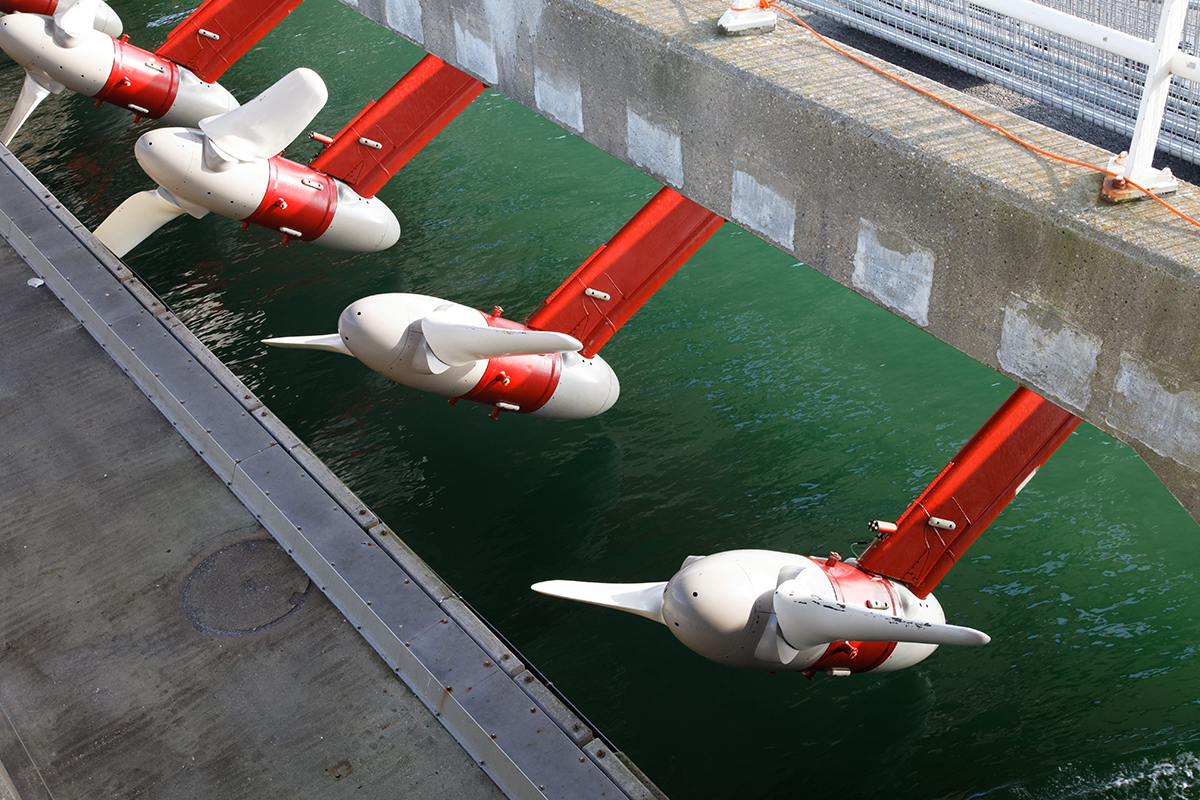Emerging Renewable Technologies

Published: Friday, 06 October 2023
Over the years we have found ways to provide the world with renewable energies. There are many different ways we can create this energy and new technologies are being discovered for us to use in the future. These emerging technologies are still in development stages and are not yet ready for intense and global usage. In this article, we will be looking at the potential future of renewable energies and how these could replace or enhance our current renewable energy technologies.
Enhanced Geothermal System
Enhanced Geothermal System (EGS) is a new type of geothermal power however, it does not require a natural convective hydrothermal resource to work. To learn more about Geothermal, check out our previous article here.
With EGS, fluid is injected underground under carefully controlled conditions. This will cause pre-existing fractures to re-open and therefore creates permeability. Once it becomes easier for the fluid to circulate through the newly fractured hot rocks, it will begin to become warmer. Operators will then pump more the hot water to the surface where it will harvest and then used to generate electricity for the grid.
EGS is used when a standard geothermal system is not available in that area which thereby extends the use of geothermal energy production.
Marine Energy
Briefly covered in our ‘Types of Renewable Energy’ article, marine energy takes advantage of the seas waves, to help generate electricity. The movement of the water will create a store of kinetic energy to help us power homes, transport, and industries. There are 5 types of marine energy. These are:
Marine Current Power
Would use underwater turbines to generate energy caused by tidal movement to spin the turbine. Due to the density of water, it would require a much smaller turbine in comparison to the large wind turbines we used today. It is important to note, ocean currents are instrumental in determining climate in many regions around the world and we do not know the effects that the turbines would have on climate in the area the energy is being farmed, but also how it will affect the sea life and their migration patterns.
Osmotic Power
At mouth of rivers where freshwater mixes with sea water, osmotic power uses pressure to harness the energy from the salinity gradient. The issue with osmotic power is aquatic life are adapted to survive marine, brackish, or freshwater environments. Osmotic power creates brackish water, if we are using osmotic in large quantities this will negatively impact the local wildlife and ecosystems which could have a lasting effect on local wildlife.
Ocean Thermal Energy Conversion (OTEC)
More effective in tropical waters, OTEC harnesses the difference in temperature of warm surface water and cold depth water to produce electricity or desalinized water. OTEC has the potentially to offer a clean and sustainable source of energy in tropical areas with deep ocean water readily available.
Tidal Power
Potentially the future of electricity generation, tidal energy is harnessed by converting the energy created by tides to generate useful forms of power. There are 4 methods to generate this power. These are:
- Tidal Stream Generator – Similar to wind turbines will use kinetic energy to generate power. Can be built in buildings or fully submersed so people with aesthetic concerns don’t need to worry.
- Tidal Barrage - Takes advantage of the energy from the difference in height between low and high tides.
- Dynamic Tidal Power – A dam like structure which once water passes over and through would spin turbines creating power.
- Tidal lagoon – creating a circular construct that when water enters will spin the turbines inside creating kinetic energy which we can harness and create electricity.
Wave Power
Located near-shore and offshore, wave power can be used for electricity generation, water desalination, or pumping water. Simmilar to most marine energy, a construct will be installed with a turbine that will generate the power needed from the waves force.

Passive Daytime Radiative Cooling (PDRC)
A renewable cooling method with the belief it could be a solution to global warming, Using the coldness of outer space as the renewable source to help achieve daytime cooling which we would be able to use in many applications. A PDRC surface are highly reflective, designed to reflect solar light, this will help minimise heat gain on a planetary scale if implemented.
There are issues with PDRC such as “overcooling” which could lead to increased heating costs and energy consumption during the winter period. As PDRC is highly reflective it can cause issues with glare, especially at ground level.
Artificial Photosynthesis
Using nanotechnology to store electromagnetic energy. Artificial photosynthesis biomimics the natural process of photosynthesis. The process is to split water to produce hydrogen and then using the carbon dioxide to make methanol. Artificial photosynthesis is still in the early stages of research and is currently unable to compete with the standard way of making hydrogen through sunlight.
Earth Infrared Thermal Radiation
Earth emits a large amount of infrared thermal radiation that travels to the cold outer space whereas, solar energy hits our surface and atmosphere to produce heat. From the energy flow of heat and cold if could be harnessed and converted into electricity. What’s great about this potential technology is that it can be used during might.
Algae Fuels
There is the potential from different varieties of algae to be an alternative of fossil fuels due to its oil-rich varieties. Currently, Algae fuels is still in its early research stage, however, has seen some companies begin to cancel their research funding over recent years.
Water Vapor
Water vapor technology would see water droplets om metal surfaces be used to make static electricity charges which can we used to make electricity. Water vapor technology is still in its experimental phase however, if successful, we could see it be used in low-income countries that have air humidity over 60%.
Countries around the world are all searching for ways to be more renewable and find solutions to issues we have faced with the overconsumption of fossil fuels. With emerging renewable technologies, we are expanding our ways to create renewable energy and reduce our need for fossil fuels.
To learn more about current renewable energy, check out our article here. To see articles dedicated to one renewable technology, check them out here.

